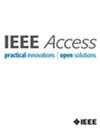Efficient Real-Time Pathfinding for Visually Impaired Individuals
IF 3.4
3区 计算机科学
Q2 COMPUTER SCIENCE, INFORMATION SYSTEMS
引用次数: 0
Abstract
This paper presents a novel computer vision system, which enables real-time pathfinding for individuals with visual impairments. The navigation experience for visually impaired individuals has significantly improved “in traditional segmentation methods and deep learning techniques”. Traditional methods usually focus on the detection of specific patterns or objects, requiring custom algorithms for each object of interest. In contrast, deep learning models such as instance segmentation and semantic segmentation allow for independent recognition of different elements within a scene. In this research, deep convolutional neural networks are employed to perform semantic segmentation of camera images, thereby facilitating the identification of patterns across the image’s feature space. Motivated by a unique concept of a two-branch core architecture, we propose utilizing semantic segmentation to support navigation for visually impaired individuals. The “demarcation path” captures spatial details with wide channels and shallow layers, while the “path with rich features” extracts categorical semantics using deep layers. By providing awareness of both “obstacles” and “paths” in the surrounding vicinity, this method enhances the perceptual understanding of visually impaired individuals. We try to prioritize real-time performance and low computational overhead to ensure timely and responsive assistance. With a wearable assistive system, we demonstrate that semantic segmentation provides a comprehensive understanding of the surroundings to those with visual impairments. The experimental results showcase an impressive accuracy of 72.6% in detecting paths, path objects, and path boundaries.视障人士的高效实时寻路
本文提出了一种新的计算机视觉系统,可以为视觉障碍患者提供实时寻路功能。视障人士的导航体验在“传统的分割方法和深度学习技术”方面得到了显著改善。传统的方法通常侧重于检测特定的模式或对象,需要为每个感兴趣的对象定制算法。相比之下,深度学习模型(如实例分割和语义分割)允许对场景中的不同元素进行独立识别。在本研究中,采用深度卷积神经网络对相机图像进行语义分割,从而便于在图像的特征空间中识别模式。基于一种独特的双分支核心架构概念,我们提出利用语义分割来支持视障人士的导航。“分界路径”采用宽通道、浅层的方式捕捉空间细节,“特征丰富路径”采用深层的方式提取范畴语义。通过提供对周围“障碍物”和“路径”的感知,这种方法增强了视障人士的感性理解。我们尝试优先考虑实时性能和低计算开销,以确保及时和响应性的帮助。通过可穿戴辅助系统,我们证明了语义分割为视觉障碍者提供了对周围环境的全面理解。实验结果表明,该方法在路径、路径目标和路径边界检测方面的准确率达到了令人印象深刻的72.6%。
本文章由计算机程序翻译,如有差异,请以英文原文为准。
求助全文
约1分钟内获得全文
求助全文
来源期刊

IEEE Access
COMPUTER SCIENCE, INFORMATION SYSTEMSENGIN-ENGINEERING, ELECTRICAL & ELECTRONIC
CiteScore
9.80
自引率
7.70%
发文量
6673
审稿时长
6 weeks
期刊介绍:
IEEE Access® is a multidisciplinary, open access (OA), applications-oriented, all-electronic archival journal that continuously presents the results of original research or development across all of IEEE''s fields of interest.
IEEE Access will publish articles that are of high interest to readers, original, technically correct, and clearly presented. Supported by author publication charges (APC), its hallmarks are a rapid peer review and publication process with open access to all readers. Unlike IEEE''s traditional Transactions or Journals, reviews are "binary", in that reviewers will either Accept or Reject an article in the form it is submitted in order to achieve rapid turnaround. Especially encouraged are submissions on:
Multidisciplinary topics, or applications-oriented articles and negative results that do not fit within the scope of IEEE''s traditional journals.
Practical articles discussing new experiments or measurement techniques, interesting solutions to engineering.
Development of new or improved fabrication or manufacturing techniques.
Reviews or survey articles of new or evolving fields oriented to assist others in understanding the new area.
 求助内容:
求助内容: 应助结果提醒方式:
应助结果提醒方式:


